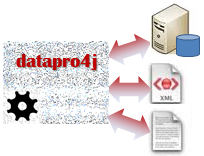jsUML2: The HTML5/javascript API for UML 2 diagramming
HTML5 is the latest version of the well-known HTML standard, a language for structuring and presenting content for the World Wide Web. Now, this new version improves the language with support for the latest multimedia while keeping it easily readable by humans and consistently understood by computers and devices. These new abilities increase the power of the language and allow the developer to create lightweight applications, where user interfaces assume a leading role that was previously inconceivable.
jsUML2 is a HTML5/Javascript API (Application Programming Interface) that serves as a base to easily incorporate UML models (possibly consisting in many UML diagrams) in your application user interface. These models can be added in different ways: create and manage read-only UML diagrams or editable diagrams with customized UML constructors, export/import functionality, save-as image, among many others. All these features are already implemented and easy to use from your web application. It is important to note that jsUML2 has been developed conformant to the UML 2 standard specification.
If you are interested in including UML diagrams as part of your application, just try this demo, which is a simple (but surprisingly complete) diagramming tool that shows some functionalities that jsUML2 provides. Notice that this editor is not conceived as a server-side application (it only contains client-side code), and no sophisticated user interface was developed, it just demonstrates the power of jsUML2. Your needs and imagination will do the rest.
more...



